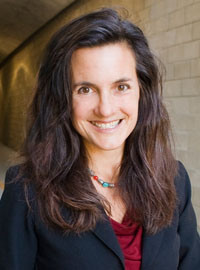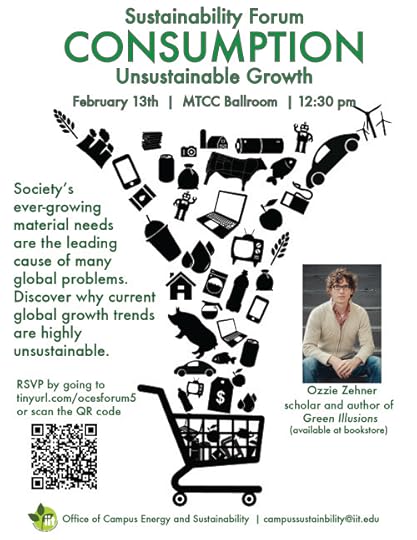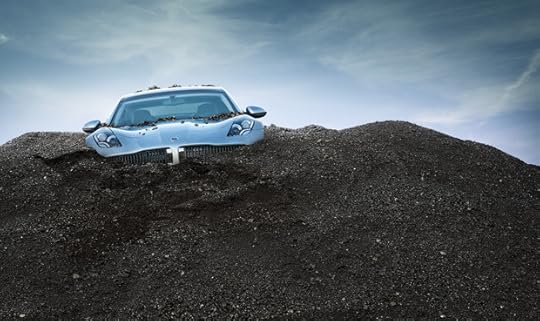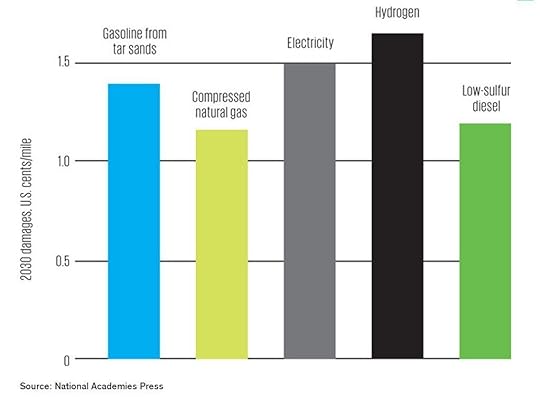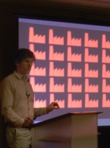Ozzie Zehner's Blog
October 13, 2020
The Plot To Kill ‘Planet of the Humans’
Shortly after Planet of the Humans premiered, a campaign arose to suppress, smear, and ultimately censor the film. A new investigative report by Max Blumenthal reveals what the censors did not want people to see, namely how the solid evidence presented in Planet of the Humans endangers a $50 trillion plan to profit off the destruction of the living world.
The censorship effort failed after 11 days and Planet of the Humans broke through to an unprecedented audience of 15-20 million this summer, mostly on YouTube.
Today, Michael Moore interviewed Max Blumenthal in a thrilling and expanded expose on the film. Blumenthal reveals that not only is Planet of the Humans correct in its critique of supposed energy solutions but it also reveals a disturbing corruption of mainstream environmental groups by billionaires and bankers.
Listen to the interview:
Episode 128: The Plot To Kill ‘Planet of the Humans’ (featuring Max Blumenthal)
Read Max Blumenthals investigation:
‘Green’ billionaires behind professional activist network that led suppression of ‘Planet of the Humans’ documentary
See Michael Moore respond to the investigation on The Hill:
August 11, 2019
Planet of the Humans
Planet of the Humans dares to say what no one will—that we are losing the battle to stop climate change because we are following environmental leaders who have taken us down the wrong road. More at: PlanetoftheHumans.com
August 21, 2015
Safe Routes to School Leader Deb Hubsmith Has Died
I sadly just learned of the passing of safe streets pioneer, Deb Hubsmith, who was responsible for saving countless lives and reminds us of the various forms that environmental leadership can take. I did not know Deb personally but had corresponded with her when writing Green Illusions. I covered her important work in articles and in Green Illusions, excerpted below. I wish her family and colleagues the best during this time.
…Many of the nation’s schools stand behind a barricade of rushed drivers–hardly a safe environment for students to bike or walk to class. A student environmental group at Bridgewater-Raritan High School raised money for a bike rack only to have their principal reject it, citing safety risks. Similarly, a principal at Island Park Elementary School in Mercer Island, Washington, an avid bicycler herself, vetoed a proposed bike route, pointing out that a fifth-grader had recently been killed while walking his bike through a street crossing.
Stories such as these are all too familiar to Deb Hubsmith, director of the Safe Routes to School (SRTS) National Partnership, which institutes programs across the country to make walking and biking to school safer and more practical for students and educators. Testifying to Congress about an SRTS pilot program, Hubsmith stated, “In only two years, we documented a 64 percent increase in the number of children walking, a 114 percent increase in the number of students biking, a 91 percent increase in the number of students carpooling, and a 39 percent decrease in the number of children arriving by private car carrying only one student.” Nevertheless, even though children represent over 12 percent of pedestrian fatalities, and bicycle-related injuries send over a quarter million children to hospitals annually, the SRTS won just 0.2 percent of the U.S. Department of Transportation’s safety budget. And even though safe routes are a far more effective challenge to fossil-fuel consumption than solar cells, legislators overwhelmingly direct more money into the solar pot. In California, for every dollar spent on safe routes, well over ten dollars has flowed to solar cells during every budget year from 2007 thru today.
Given the clear and far-ranging benefits of walking and biking to school, the fact that communities hold bake sales to finance bike racks and safe thruways for students while the fetishized solar-cell industry bathes itself in billions of public funds is an inglorious national embarrassment. There is no secret to designing safe and convenient bikeable and walkable communities. The strategies are flexible to a wide array of neighborhood layouts, simple to institute, and return rapid paybacks in terms of public safety, quality of life, energy footprints, and long-term infrastructure maintenance costs. Ultimately, the success of bikeable neighborhoods hinges on a community’s ability to establish a bicycling culture, where bicycling and walking stand as legitimate and esteemed modes of transportation…


February 9, 2015
Free lunch with Ozzie
No, I won’t be cooking, so it safe to come join me for lunch, a short talk, and a discussion/Q&A. It’s happening this Friday, Feb 13th, at the Illinois Institute of Technology at 12:30pm.
It’s free! Just like solar energy. But please RSVP here.
Date: Friday, February 13th
Time: 12:30pm to 2pm
Location: MTCC Ballroom, IIT Campus
Lunch is included.
(vegetarian options available)
Questions? Email:
campussustainability@iit.edu
See more about the book:

June 9, 2014
Ozzie at the City Club
 No, I’m afraid that’s not a statue of me. But if you are interested in a Green Illusions show-and-tell or would like to hear about the new project I’ve been working on, I will be giving a talk and taking questions at the City Club in San Francisco on June 18th at noon, lunch included. Tickets are $45 (If the cost causes any difficulties, let me know). Here’s the link.
No, I’m afraid that’s not a statue of me. But if you are interested in a Green Illusions show-and-tell or would like to hear about the new project I’ve been working on, I will be giving a talk and taking questions at the City Club in San Francisco on June 18th at noon, lunch included. Tickets are $45 (If the cost causes any difficulties, let me know). Here’s the link.
JAMISON ROUNDTABLE LUNCHEON
Featuring: Ozzie Zehner, author of “GREEN ILLUSIONS“
Wednesday, June 18
12 noon – 1:30 pm
The City Club of San Francisco
155 Sansome, 10th floor
9th Floor
San Francisco, CA 94104
See more about the book:


September 17, 2013
Northern California Book Awards at the Mechanics’ Institute
I’m delighted to announce that Green Illusions has won the Northern California Book Award. I’ll be saying a few words and taking questions along with two amazing writers, Victoria Sweet and Art Beck at the Mechanics’ Institute, an impressive San Francisco literary landmark. Mention that you are my guest to receive a complimentary ticket at the box office or call (415) 393-0100.
Tuesday, September 24 at 6:00 pm at Mechanics’ Institute, 57 Post Street, San Francisco, 4th floor Meeting Room
The Northern California Book Awards are presented and sponsored by Northern California Book Reviewers, Poetry Flash, Center for the Art of Translation, Red Room (redroom.com), PEN West, Mechanics’ Institute, San Francisco Public Library, Friends of the San Francisco Public Library, and Readers Bookstore at the Main.
photo by Brandon Doran
See more about the environmental book Green Illusions here:


July 5, 2013
Green Illusions Tops European Rankings
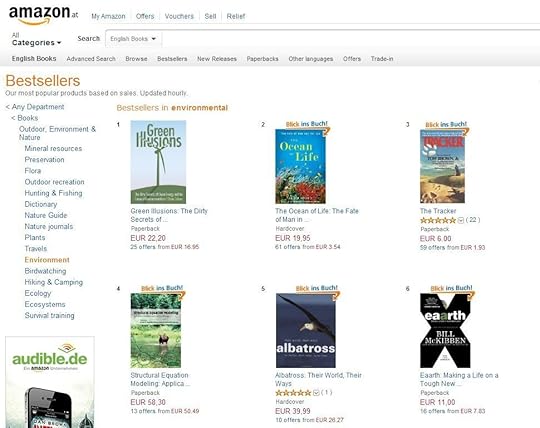 Many thanks to my European readers for your interest. While writing Green Illusions I never expected it would have a large European readership, or even European distribution. Regardless what you think of the book’s arguments, it’s written in English and presents a largely North American perspective. But since the publication of my recent article critiquing solar cells in Der Standard, an Austrian newspaper, Green Illusions has risen to the top of its book category. Well, Europe, I hope you enjoy. And if you don’t, I hope you’ll email to explain why.
Many thanks to my European readers for your interest. While writing Green Illusions I never expected it would have a large European readership, or even European distribution. Regardless what you think of the book’s arguments, it’s written in English and presents a largely North American perspective. But since the publication of my recent article critiquing solar cells in Der Standard, an Austrian newspaper, Green Illusions has risen to the top of its book category. Well, Europe, I hope you enjoy. And if you don’t, I hope you’ll email to explain why.
Read the positive (and negative) reviews of Green Illusions:


June 30, 2013
Tesla, Leaf: Unclean at Any Speed?
I was once an electric car enthusiast. I even built one! But in my new IEEE cover feature, I ask, “Are electric cars among the cleanest transportation options, or among the dirtiest?”
Unclean at Any Speed considers the entire life cycle of electric cars, especially their manufacturing impacts, in an effort to reveal a more comprehensive understanding of these vehicles, which governments are spending billions to subsidize. But there’s a more intriguing question.
Why did we ever think electric cars would be clean in the first place? And, how did electric cars come to be revered as a symbol of progressive green identity?
I start the article with a story from last summer, when California highway police pulled over pop star Justin Bieber, speeding through LA as he attempted to shake off the paparazzi. His car? A chrome-plated $100,000 plug-in hybrid Fisker Karma. Bieber’s manager, Scooter Braun, and fellow singer Usher offered it as an 18th-birthday gift – televised – where Braun remarked, “We wanted to make sure, since you love cars, that when you are on the road you are always looking environmentally friendly, and we decided to get you a car that would make you stand out a little bit.” Mission accomplished.
Bieber joins a growing list of eco-celebrities who are leveraging their electric cars into green credentials. President Obama once dared to envision a million electric cars in the U.S. by 2015. London’s mayor, Boris Johnson, vibrated to the press over his born-again electric conversion after driving a Tesla Roadster, marveling how the American sports coupé produced “no more noxious vapors than a dandelion in an alpine meadow.”
Environmentalists who once stood entirely against the proliferation of automobiles now champion subsidies for companies selling electric cars and tax credits for people buying them.
Alas, these carrots can’t overcome the reality that the prices of electric cars are still very high—a reflection of the substantial material and fossil-fuel costs that accrue to the companies constructing them. And some taxpayers understandably feel cheated that these subsidies tend to go to the very rich. Amidst all the hype and hyperbole, it’s time to look behind the curtain. Are electric cars really so green?
My article considers how electric cars merely shift negative impacts from one place to another. Most electric-car assessments analyze only the charging of the car. This is an important factor indeed. But a more rigorous analysis would consider the environmental impacts over the vehicle’s entire life cycle, from its construction through its operation and on to its eventual retirement at the junkyard.
The electric car’s presumed cleanliness has not held up to scrutiny from broad, publicly funded studies from the National Academy of Sciences, the National Science Foundation and the Congressional Budget Office. For instance, The National Academies’ assessment drew together the effects of vehicle construction, fuel extraction, refining, emissions, and other factors.
In a stomach punch to electric-car advocates, it concluded that the vehicles’ lifetime health and environmental damages are actually greater than those of gasoline-powered cars. Indeed, the study found that an electric car is likely worse than a car fueled exclusively by gasoline derived from Canadian tar-sands!
The hope, of course, is that electric-car technology and power grids will improve and become cleaner over time. But don’t expect batteries, solar cells, and other clean-energy technologies to ride a Moore’s Law–like curve of exponential development. Rather, they’ll experience asymptotic growth toward some ultimate efficiency ceiling. When the NationalAcademy’s researchers projected technology advancements and improvement to the U.S. electrical grid out to 2030, they still found no benefit to driving an electric vehicle.
If those estimates are correct, the sorcery surrounding electric cars stands to worsen public health and the environment rather than the intended opposite. But even if the researchers are wrong, there is a more fundamental illusion at work on the electric-car stage.
Almost every electric vehicle study compares electric vehicles to gas-powered ones. In doing so, their findings draw attention away from the broad array of transportation options available—including living walking, bicycling, and using mass transit.
No doubt, gasoline- and diesel-fueled cars are expensive and dirty. Road accidents kill tens of thousands of people annually in the United States alone and injure countless more. Using them as a standard against which to judge another technology is a remarkably low bar. Even if electric cars someday pass over that bar, how will they stack up against other alternatives?
Read the full article here: http://spectrum.ieee.org/energy/renewables/unclean-at-any-speed
Or, check out the book:


April 4, 2013
Green Illusions Nominated for Northern California Book Award
I just received a letter of congratulations this morning. Apparently that critique of green energy that I wrote is one of five nominees for the 32nd Annual Northern California Book Awards. Although, the other four authors are perhaps insurmountable competition. My money is actually on Seth Rosenfeld for Subversives: The FBI’s War on Student Radicals, and Reagan’s Rise to Power.
Read more in my recent environmental book:


April 3, 2013
Is Renewable Energy Renewable?
Of the disadvantages of renewable energy, one issue stands out: Can these technologies be renewed without fossil fuels? I recently spoke with Mark Hand about the renewability of renewable energy in an interview. Here’s the first question:
SNL Energy: What is your reaction when you see news headlines that say, “100% renewables could be closer than we think,” or, “European Union could reach 100% renewables by 2050?”
Ozzie Zehner: There are lots of research studies saying we have enough wind energy to supply 100x our needs or we have enough solar in the Mojave Desert to do this and that. The problem is that if we were to actually build that many solar panels, for instance, it would be an ecological disaster. The Mojave Desert might be the Saudi Arabia of solar, but if we were to cover deserts with solar cells, the consequences would destroy civilization as we know it within a single generation just because of heavy metals, greenhouse gases, economic effects and so on.
In my mind, there is a presumption that we have a choice between alternative energy and fossil fuels. But the reason that I wrote the book was to draw out why that choice that we seem to have between the two is an illusion. And that’s because alternative energy technologies rely on fossil fuels through every stage of their life. They rely on fossil fuels for raw material extraction, for fabrication, for insulation and maintenance, and for decommissioning and disposal.
Aside from the physical lifespan, they also rely on fossil fuels for their financing. They rely on an economy whose growth is driven by fossil fuels. The kind of financing that you need for renewables requires that. You need concurrent fossil fuel plants running alongside solar cells and wind turbines at all times.
From ‘Green Illusions’ author dissects ‘overly optimistic expectations’ for wind, solar in SNL Energy, April 1, 2013.
Read more in my recent environmental book:



